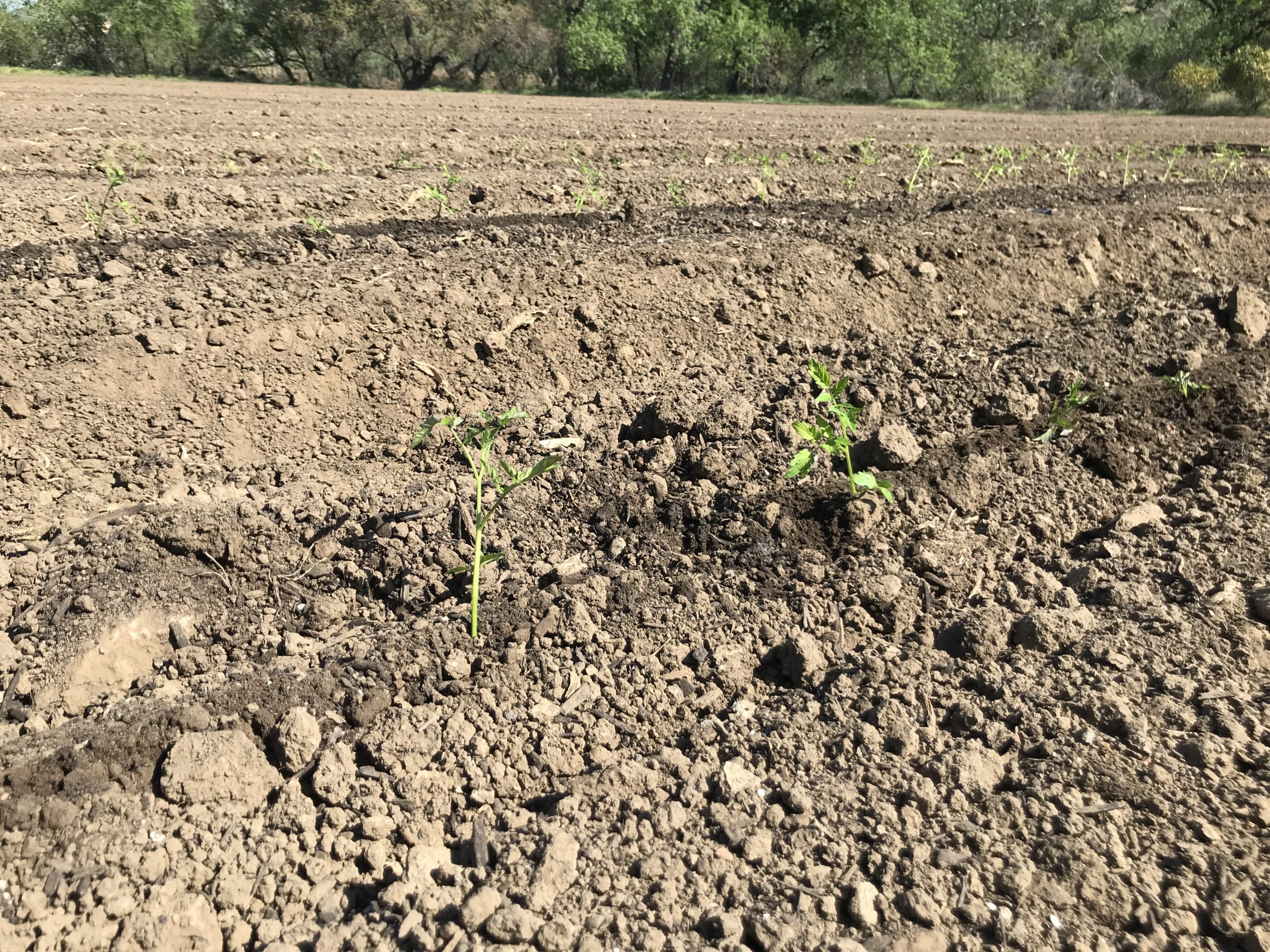
It’s Monday morning and it’s raining! Not the “Miracle March” that we would’ve liked, but some rain is better than none. With all the dry weather, we’ve been able to get a lot of transplants in the ground. By the end of the workday on Saturday, our first field of tomatoes was planted, as well as our first summer squash! All the planting requires bed preparation, which means a flurry of tractor activities: mowing the cover crops, some tillage, adding compost, and then forming and shaping the beds to form a nice surface for seeds or transplants.
All transplanters basically do the same thing: something creates a hole or furrow in the soil, a plant is dropped in the hole or furrow, then the dirt is packed in around the plant. All of the potting soil from the seed trays needs to be covered up; this soil is designed to drain away water and if left exposed to the air, the plants will dry out. We’ve got a few different transplanters – we choose primarily based on the crop we’re planting.
For some things (onions and flowers), all the transplanting is done by hand because the plants are too delicate (or too tall or too oddly shaped) to be handled by a mechanical transplanter.
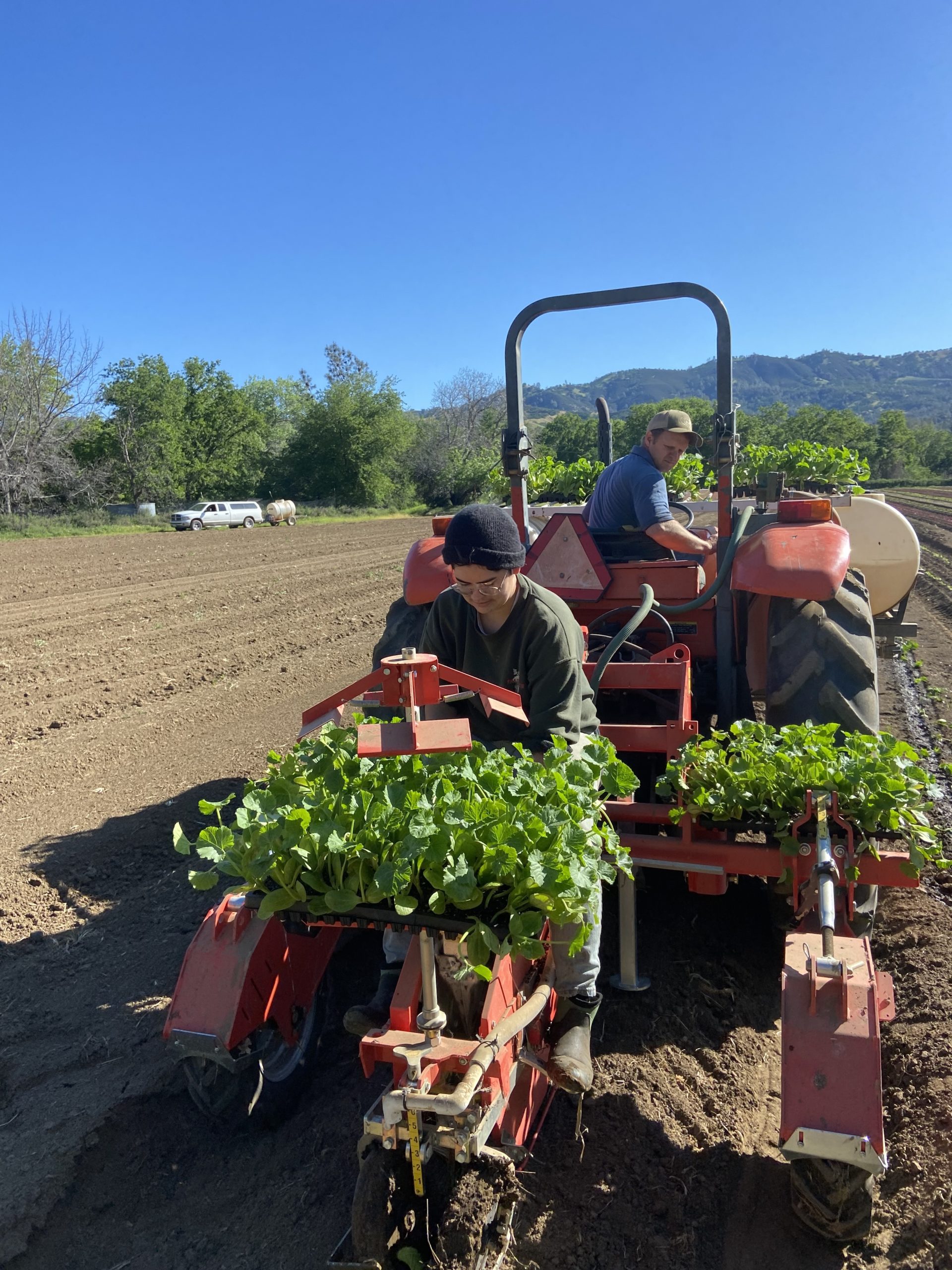
For the summer squash, we used a jab planter, which are often used when planting into plastic mulch. It jabs a hole into the dirt (and if using plastic, through the plastic), and drops a plant in from a rotating wheel. One person sits on the transplanter and they load plants in to each compartment on the wheel, which rotates vertically, like a Ferris wheel. We’ve added equipment to douse each transplant with water so hopefully we don’t have to go back and water it again for at least a week, potentially up to three.
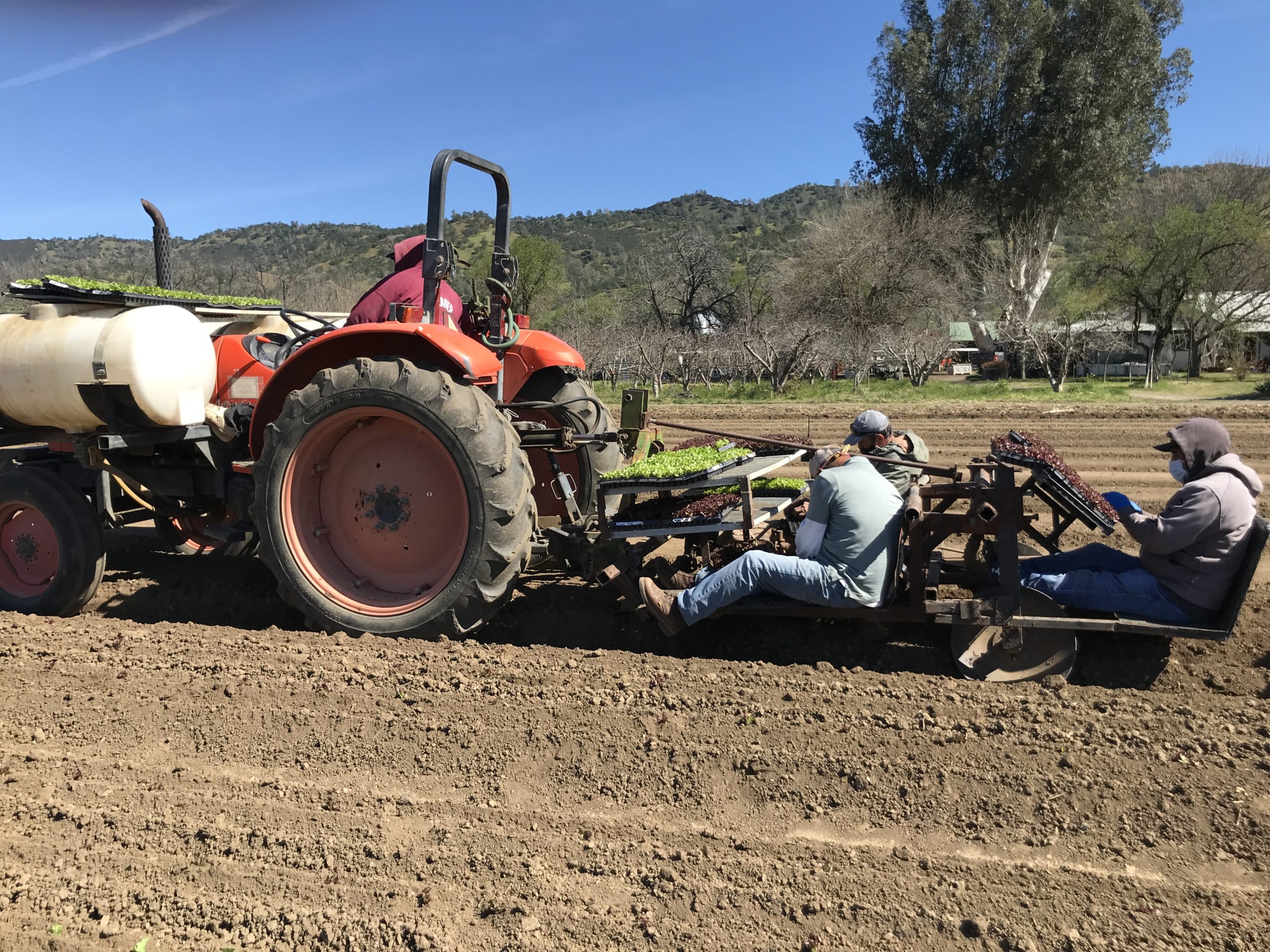
We also transplanted lettuce. This transplanter has three people on the back, plants three lines of lettuce per row, and unlike some of our other transplanters, it doesn’t apply water (despite the water tanks on the tractor in the photo), and it doesn’t have a wheel that drops plants in the ground. The transplanter opens up the soil and the human transplanters have to put the plant in the ground and hold it there until the dirt is packed around it. Unlike the machines, they’re responsible for getting equal spacing! The people following behind the tractor fill in missing plants, bury them deeper (if necessary), and make other adjustments.
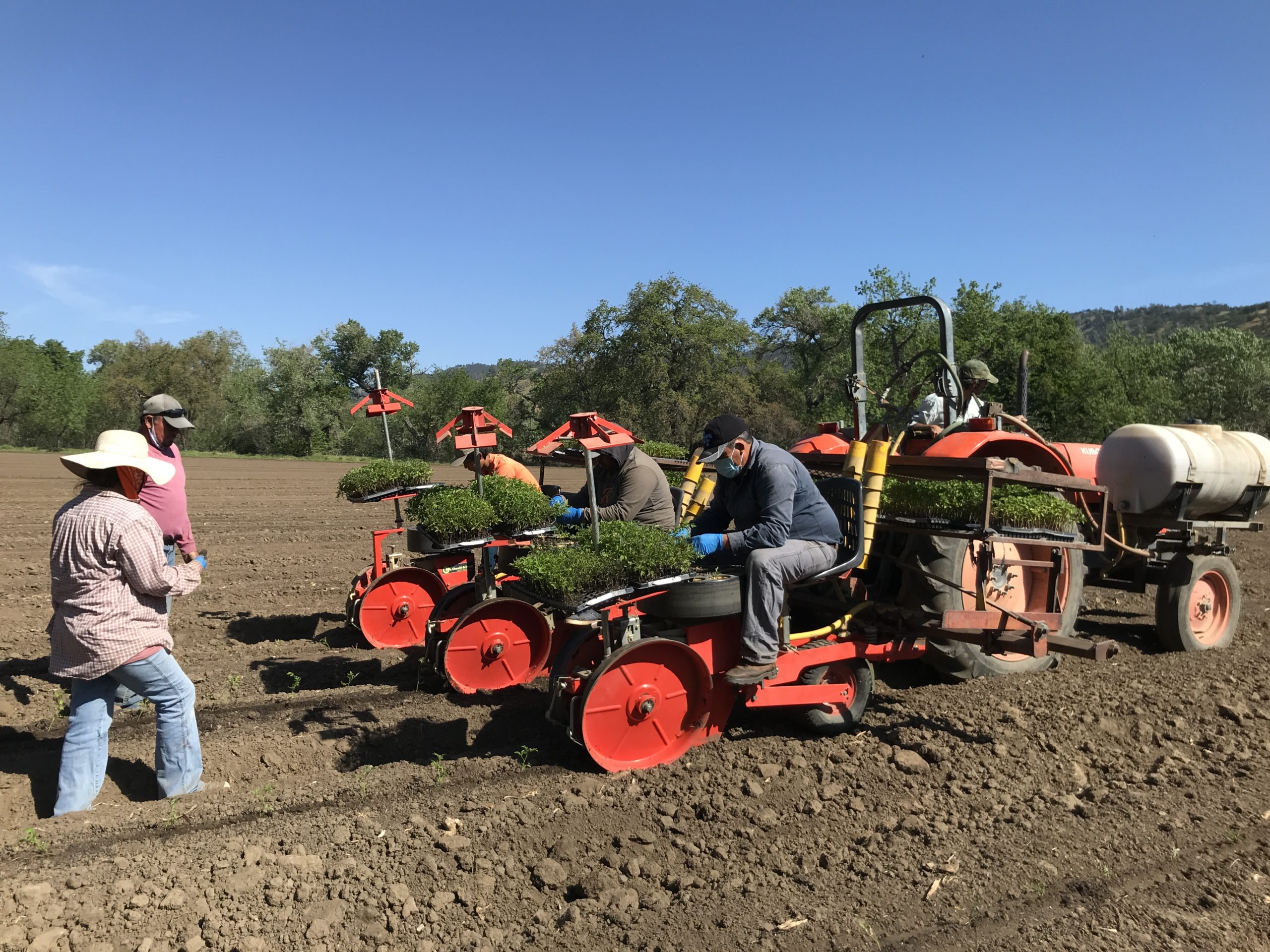
And probably the most exciting, we’ve started planting tomatoes! About 1.5 acres of cherry tomatoes and 0.75 acres of early girl tomatoes, the first of our first planting of tomatoes. Unlike the lettuce, we transplant one tomato plant per row and this transplanter spans three rows at a time. It’s a standard transplanter with a wheel that rotates horizontally. The wheel has several compartments and each compartment gets filled up with a plant. As the wheel rotates, each compartment eventually passes over a hole and the plant drops to the ground. This transplanter applies water to the plants below the surface. Less water than what the squash received, but it still buys us some time before we need to irrigate.
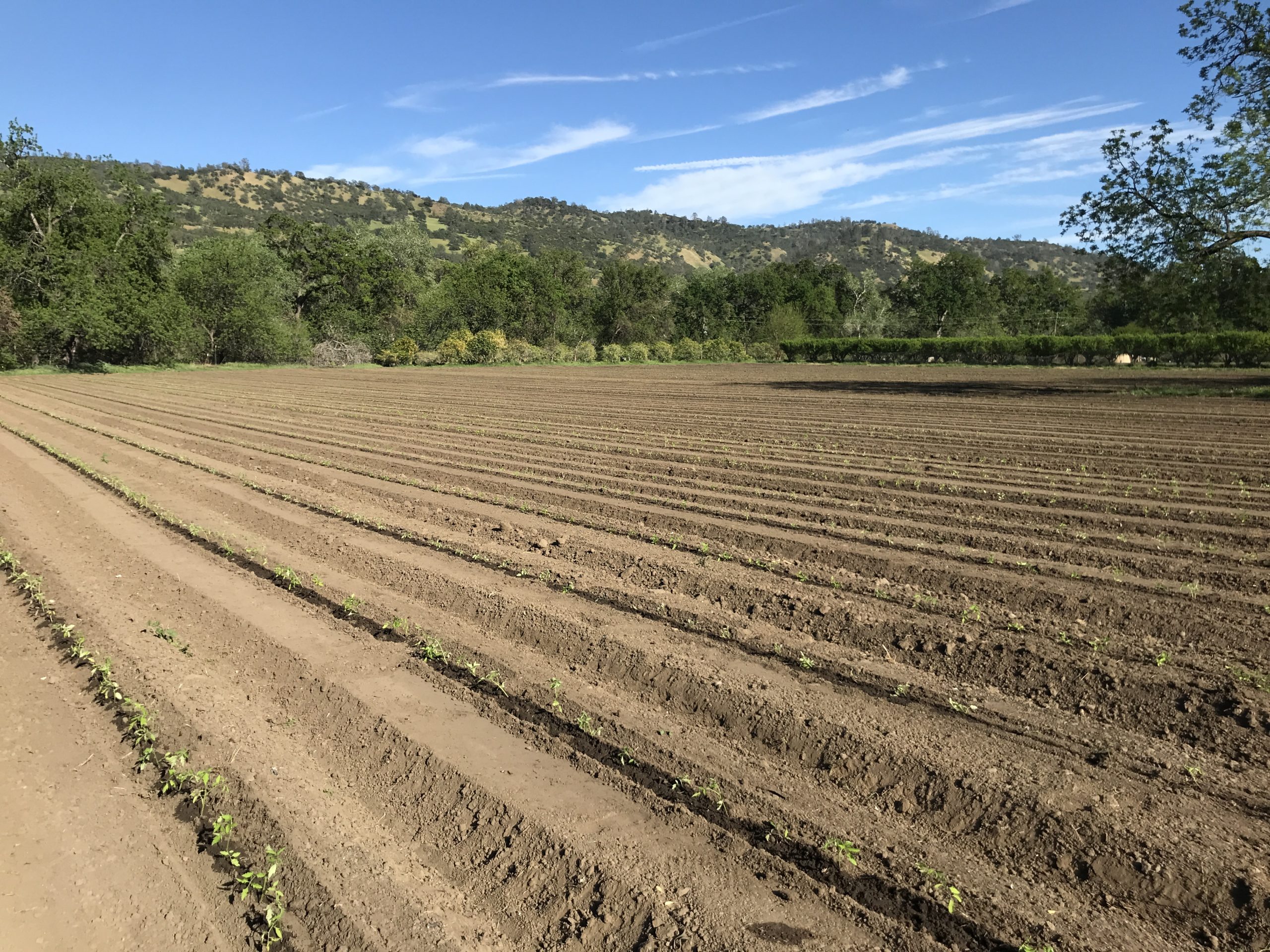
Next up: heirloom tomatoes! And hopefully more rain.
– Elaine Swiedler, CSA Manager
